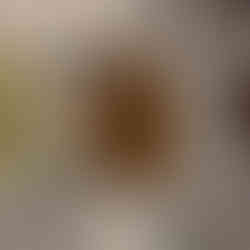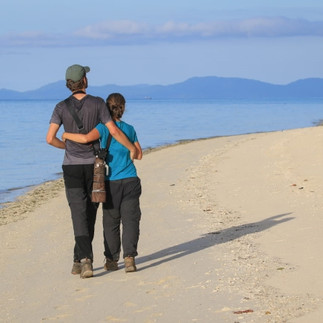Search
It’s a Wild Life – Goodbye Southeast-Asia
- Romy Jansen
- Jul 27, 2024
- 4 min read
After four months of traveling through Thailand, Laos, Cambodia, and Vietnam, arriving in Malaysia felt like sinking into a warm, soft, comfy bed—literally! Our first night in Kuala Lumpur, we were thrilled to find a wonderfully soft bed. At our second hotel, we realized this comfort was standard here. What a pleasant surprise after all those hard beds (or were they tables?!) in Asia!
Another delightful surprise was that people spoke English again. We could ask anything and be understood, without the need for Google Translate. This made conversations so much easier and more enjoyable. Perhaps because we understood each other better, people even seemed friendlier.
The variety of food was also a welcome change. Rice and spicy dishes were no longer the standard for every meal. And even guilty pleasures like pizza or French fries were available.
In Malaysia we were able to sleep in a little bit, as sunrise was only at 07.00. Malaysia uses a single time zone for the whole country, for both the Peninsula as well as for Borneo. This means it's an hour later in Peninsular Malaysia compared to Vietnam, even though Vietnam is further east. Check the time zone map; it’s quite amusing.
When you think about Southeast-Asia, Islam might not immediately come to mind, but Malaysia is an Islamic country. We looked forward to sleeping in until 07.00 AM, but were woken up at 06.00 AM by the prayers that were casted from the nearby mosque. Lesson learned: in a country where soundproofing of hotels is near absent, choose your hotel away from any mosque if you want to sleep in.
On Borneo about half the time we opted for local buses or hitchhiking to keep costs low. But after being dependent on public transport in most of Laos, Cambodia and Vietnam, is was great to be able to rent a car again in Malaysia. This gave us the freedom to explore at our own pace. Speaking of cars, our loyal vehicle Forrest is still waiting for his next owner in Chile. Anyone interested? :)

When you think about Borneo, many people will imagine the things you see in nature documentaries. It's such an iconic destination. When we were young, we imagined it as one vast Amazon-like area with big rivers and rainforest everywhere. But the reality is different. The province of Sabah is very touristy, making travel easy and accommodation widely available. However, huge parts of land are covered with palm oil plantations for export. It’s such a contrast to see nature areas with 1000’s of species within a small area opposed to a monoculture of palm oil going on for kilometres on end.

The province of Sarawak is less known, which made it fun to visit. Although we stayed in some of the crappiest accommodations (not even sure you could call it that), we enjoyed seeing some cool endemic species. Speaking of endemics, in the places we visited we saw or heard nearly all the possible Bornean endemic bird species. As for mammals, we saw iconic creatures like Bornean Orangutans, Proboscis Monkeys, Bornean Pygmy Elephants, and many more cool animals. However, we missed one of our big targets: Bornean Clouded Leopard. To try and see this species, we stayed in Deramakot Forest Reserve for five nights. With a guide and a car including driver, we searched for seven hours each night. This meant starting at 19:00 and coming back at 2:00 AM. They made a bench in the back of a pick-up truck, and together with our guide, we searched for seven hours straight. Rob used his headlight to look for eyeshine, and I used the Lahoux Thermal. Although it could be quiet at time, we saw a lot! Romy even found the rare Sabah Grizzled Langur with the thermal camera, and Rob spotted the rare Marbled Cat 3 times in 5 nights. But, unfortunately, we did not find the Clouded Leopard. After this reserve we needed to get back to the capital of Sabah, Kota Kinabalu. When waiting for a bus we often try hitchhiking while waiting, and then see which one comes first. After 15 minutes, a local stopped and invited us to join him. He brought us all the way to our hotel; a four hour drive. How friendly!

Our world travel is coming to an end. On July 28th we are flying back to the Netherlands, and we are looking forward to seeing friends and family again after such a long time. On Borneo we could already enjoy some Dutch company. One of our best friends told Rob he was in the neighbourhood, meaning he was in the Philippines for work. Of course Rob joked and said, "Cool, then we'll see you soon on Borneo to go birding together." Within two days the tickets were booked. Two weeks later, Rob drove to the airport in the middle of the night to pick up Ruben for a few days of birding. Together, we searched for birds in the middle of the night in a closed off park, on the famous Mount Kinabalu, and Ruben even joined us on our romantic getaway to the idyllic Mantanani Island. And if his company wasn’t enough, he even brought us real Dutch Stroopwafels! We had a lot of fun and enjoyed his company. We’ve encountered other people we’ve known during our travels, but this visit was the only one really planned. But still very spontaneous :)
Our last month is filled with Peninsular Malaysia and the final five days in Singapore. Although we’ve seen a lot in SE-Asia, there are still new birdies and mammals to search for. And when there is still an opportunity to see something, we go for it. Seeing mammals like the Siamang (the largest of the gibbons, jokingly called ‘tree-gorilla’ by Rob) is a now-or-never opportunity. In between all the birding and mammal watching we are also preparing things for back home. Rob is applying for a study to become a Biology teacher, and I even had my first job interviews quite late in the evening due to the time difference. But even then we wake up early the next morning to find that special bird, because now we can still enjoy it to the fullest! We’ll sleep when we’re back home.





















Comments